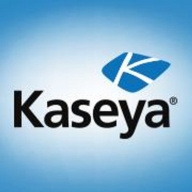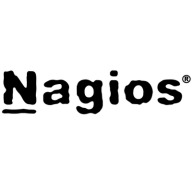

Nagios XI and Kaseya Traverse compete in the IT monitoring space. Nagios XI appears to have the upper hand due to its pricing, flexibility, and customization options, making it more appealing to users seeking cost-effective solutions with extensive plugin support.
Features: Nagios XI is built on an open-source foundation, offering customizable plugins and broad IT monitoring capabilities. It provides scalability and can be configured manually or through a web interface, facilitating extensive customization. Kaseya Traverse delivers a wide range of monitoring tools, appealing to service providers with its multi-device compatibility and strong performance monitoring features.
Room for Improvement: Nagios XI could simplify its setup process to address complexity, improve clustering and failover features, and enhance its interface for better scalability. Kaseya Traverse needs better integration, enhanced reporting capabilities, and improvements in AI to refine its offerings.
Ease of Deployment and Customer Service: Nagios XI is mainly deployed on-premises, with some hybrid setups, offering flexibility but requiring in-depth tweaking. Customer service can be professional but is sometimes costly and slower. Kaseya Traverse is deployed across various cloud environments, benefiting from an integrated support approach that ensures smoother operations and clear client feedback channels.
Pricing and ROI: Nagios XI provides cost advantages through its open-source version, although its commercial license and support may be expensive. Kaseya Traverse offers a competitive pricing model, often considered reasonable, with subscription-based licenses that provide flexibility. Both solutions demonstrate ROI by reducing manual monitoring time, although pricing can affect perceived value.


Immediately identify impacted IT services using insights based on rich data analytics of events such as SNMP traps, Windows events and Syslogs. Resolve faults quickly via NetFlow enabled root cause analysis across cloud, on-premise, hybrid cloud and virtualized IT environments.
Nagios XI provides monitoring of all mission-critical infrastructure components, including applications, services, operating systems, network protocols, systems metrics, and network infrastructure. Third-party add-ons provide tools for monitoring virtually all in-house and external applications, services, and systems.
Nagios XI uses a powerful Core 4 monitoring engine that provides users with the highest levels of server monitoring performance. This high degree of performance enables nearly limitless scalability and monitoring powers.
With Nagios XI, stakeholders can check up on their infrastructure status using the role-based web interface. Sophisticated dashboards enable access to monitoring information and third-party data. Administrators can easily set up permissions so users can only access the infrastructure they are authorized to view.
Nagios XI Benefits and Features
Some of the benefits and top features of using Nagios XI include:
Reviews from Real Users
Nagios XI stands out among its competitors for a number of reasons. Several major ones are its integration options and monitoring abilities, as well as its alerting features.
David P., a senior DevOps engineer at EML Payments Ltd, writes, “We use Nagios as a network discovery tool. We use Nagios to maintain our uptime statistics and to monitor our services. It has allowed us to be much more sophisticated in our monitoring and alerting.”
An IT-OSS manager at a comms service provider notes, “Nagios XI has a custom API feature, and we can expose custom APIs for our integration. This is a great feature.”
We monitor all Network Monitoring Software reviews to prevent fraudulent reviews and keep review quality high. We do not post reviews by company employees or direct competitors. We validate each review for authenticity via cross-reference with LinkedIn, and personal follow-up with the reviewer when necessary.